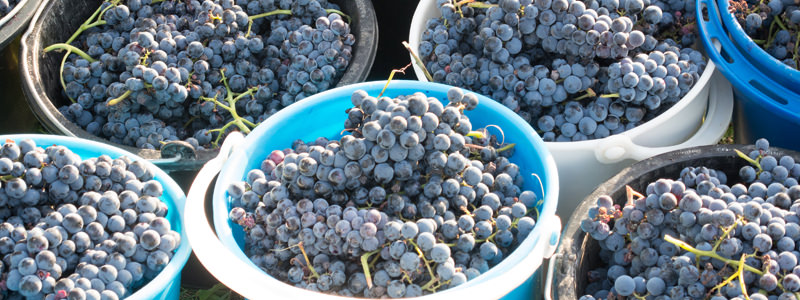We’re in the midst of harvest season, which means finally, after all that hard work and the trials and tribulations that come with farming, the grapes are ready to be picked, ultimately heading to our bottle of wine. And these grapes are precious commodities, especially when it comes to wines on the higher end. Ones that don’t look perfect will be discarded, and that’s tough to stomach when you realize how many grapes are actually needed in order to make that bottle of wine you’re enjoying, coupled with how few grapes each acre of land actually produces. It’s no wonder certain bottles can get pricey.
Generally speaking, every single bottle of wine is made up of 600-800 individual grapes. That’s about 10 clusters. Think about this in relation to the conventional grapes you buy in the supermarket. Most of these bags have 3-4 clusters inside them, meaning you’d have to buy 3 bags of supermarket grapes to yield one bottle. That’s not just a lot of grapes, as you know from grocery shopping, depending on the quality, those grapes can get pricey.
So why do some bottles cost a lot, while others cost a little? It all depends on how many grapes a vineyard is able to produce per acre. But how many grapes per acre a vineyard produces depends on a lot of things: how are they farming, what’s the climate, what types of grapes are they trying to grow? For the most part, farming practices will be the largest determinant of the yield. If someone is dry farming, running an organic vineyard, and following biodynamic protocols, their vineyard may only produce 2 tons of grapes per acre. But if the vineyard is being farmed with quantity in mind, using every state-of-the-art tool available, it might be able to produce up to 10 tons of grapes.
The output level of a vineyard is where price and quality get determined. A vineyard that produces less grapes per acre results in grapes that are usually fuller in flavor and more concentrated, whereas a vineyard with a large output generally creates grapes whose juice is watery, which means it ultimately will take more grapes to create a flavorful wine.
But how does this all translate back to the bottle? Well, each ton of grapes results in about 720 bottles – that’s 7,200 grape clusters or 432,000 to 576,000 individual grapes. From this, one can easily see how price is impacted. If you’re a vineyard that only produces one or two tons of grapes per acre, you’ll wind up with 720-1,440 bottles, but if you’re getting ten tons per acre, you’re getting 7,200 bottles. If you’re the vineyard that’s producing less bottles per acre, you can be sure your bottle will be more expensive than the vineyard that is able to crank out almost 8,000 bottles for every acre of land.
So the next time you pop open a bottle of wine, pour a little out for the hundreds of grapes that gave themselves up for your delicious enjoyment.

